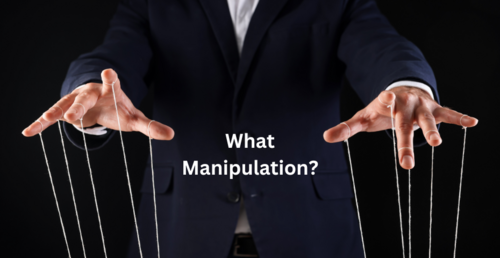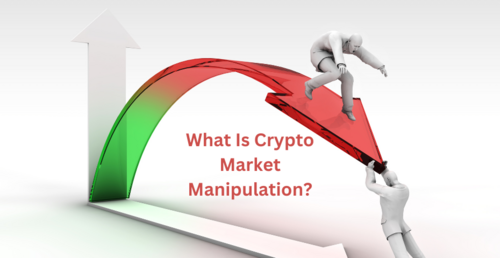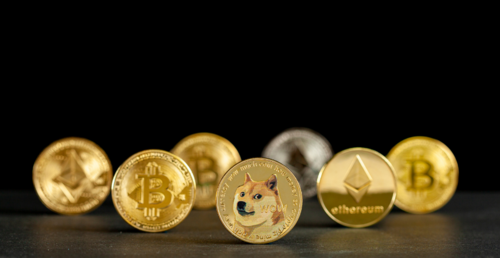
Is the Crypto Market Manipulated? How to Protect Yourself
.png)
If you’re concerned about paying for goods in crypto due to its price volatility, it’s worth noting that a fair bit of that price volatility isn’t just the herd stampeding in one direction or another.
Just as there are good reasons many cryptocurrencies can see prices rise or fall rapidly — a successful step in development, a big new use case or simply signs that it’s being adopted by users can drive prices very rapidly in the volatile industry — there are many ways they can be manipulated.
Here’s a look at how it happens, and why it matters.

What Manipulation?
In some ways, crypto market manipulation resembles manipulation on traditional exchanges — pump and dumps, wash trading, spoofing, stop hunting and simply spreading false rumors (which can be fairly easy to do in crypto).
Then there are tactics more distinctive to crypto, notably buy and sell walls created by “whales,” or owners of huge blocks of cryptocurrencies. This isn’t limited to bitcoin. Ethereum’s ether has the same problem, as do many of the so-called “alt-coins” — although in the last couple of years, ether, which has a market capitalization of about 45% of bitcoin, has largely been pulled out into its own category.
In some ways, market manipulation is a lot easier in alt-coins. Aside from a few dozen of the biggest coins, they often receive very little scrutiny, price-wise, and the sums involved in manipulating the market are not as great.
But just the same as bitcoin, crypto market manipulation has several unique characteristics that make it easier to do, and harder to stop, than in the stock and commodity markets.
First, cryptocurrencies are pseudonymous — not quite anonymous, as all transactions can be viewed on a publicly accessible blockchain — so the identity of a manipulative trader is hidden behind the key codes needed to send a crypto transaction.
The crypto market isn't nearly as closely regulated as other trading, but there are ways to protect yourself from market manipulation.
What do you think when a crypto price surges and falls almost immediately? Only sometimes is it a result of regular market volatility. Often market manipulators cause a sudden rise and fall in market prices to defraud you. These bad actors go to any extent and use different tricks to achieve their aim, putting you in a bad market position.
In this article, we will reveal some market manipulators’ tricks and show you some measures you can take to mitigate the effect of crypto price manipulation on your trading balance.

A deliberate attempt to influence the value of assets and interrupt a crypto market trend is known as crypto market manipulation.
In crypto manipulation, bad actors create illusions to inflate or deflate the market prices to snatch up profits. For example, they could spread fake news, run a series of pressuring tweets, create fake orders, release false market signals, speak negatively about an asset to induce fear in traders, etc. Hence, you must know how to spot and combat those manipulative tricks, which you will discover as you proceed.
Market manipulation has caused a lot of harm to crypto investors and the crypto market at large. It makes the market unnecessarily volatile and unsafe for investors, an issue that has made many traders and investors lose their trust in crypto.
Below are popular ways in which the crypto market can be manipulated.

Pump and dump is one of the most frequently used market manipulation strategies. It occurs when an individual or a group of people conspire to inflate the price of a crypto asset. The price inflation creates noise and attracts people to buy the asset. The bad actors then withdraw their funds sharply to make quick profits. The withdrawal deflates the price sharply and leads to sudden losses for many that were deceived. The major targets for pump and dump are cryptos with low trading volume.

Crypto whale spoofing involves manipulating the crypto market by initiating fake orders. This method involves placing large buy or sell orders intended to be canceled. Spoofing makes the market look favorable for trade, and as soon as retail traders send their orders and the market goes in their desired direction, they withdraw their profit.
Spoofers try to sow fear, uncertainty, and doubt (FUD) to make you trade in their favor. Another way they can do this is to try to influence people’s decisions and market sentiments through various seemingly unrelated social media posts. Spoofing was a constant issue during the early days of Bitcoin, and it is still common in less-regulated exchanges.
(1).png)
Wash trading is when a group of traders rapidly buy and sell crypto to generate high trade volumes. This act is carried out to attract traders and help such an asset gain attention. The multiple entries feed the market with misleading signals that distort an asset’s value and further lure investors to trade based on the false signal.
Wash traders need multiple accounts to carry out market manipulation. They sell crypto with an account and buy it with another account. Hence, wash traders trade with themselves. This act is possible with unpopular crypto and smaller exchanges with low liquidity and trade volume since their trading activities are not so much. Wash trading can help them boost trade volumes and earn more commissions.

Stop hunting is an attempt to force traders out of their trade positions. The action can drag an asset below the price where traders have placed many stop-loss orders. Bad actors initiate multiple sell orders to make a crypto price decline and hit the stops. This results in high crypto volatility and gives the attackers a chance to buy at a lower price.
Stop hunting is a strategy financial institutions and market-makers use to make short-term profits. Once they discover a cluster of stop-loss orders around the same price, they’ll force the market through the orders and displace traders from their positions.
Below are some ways you can guard against crypto market manipulation to an extent.
Do your research before trading by confirming prices from different reliable sources. Using multiple crypto exchanges, you can compare assets’ prices and data for relative relatedness. For example, if a price is pumping on one exchange, cross-checking against another can reveal the true price and help you avoid a rug pull or pump and dump.
The trend, they say, is your friend. Historical trends offer precision in trading as the data can be consistent and reliable. Bad actors often prey on recent market trends but may find it difficult to distort historical trends. Trading based on prevailing trends could help reduce the rate at which market manipulation affects prices—manipulated trends don’t last.

Following a trading plan can save you from trading based on impulse and social media hype. Your trading plan should include your guidelines for executing trades and risk management strategies. With this in place, you can trade based on a predetermined market condition.
This is not to say this can make you totally immune to market manipulation. However, it will put you in a better place than someone trading on impulse.
Most market hypes are short-lived, and those who HODL their crypto do not experience whatever adverse effect short-term traders experience.
Make sure to trade on trusted exchanges that have a good reputation. New exchanges and coins with less trade activity are usually susceptible to market manipulation. This is not to say that attackers cannot manipulate market prices on exchanges with large trade volumes; they are only reduced compared to newer exchanges.

Considering the issue of market manipulation, putting all your eggs in one basket may not be a good idea. Studying different crypto asset prices to get predictive patterns from how they behave to diversify your portfolio is a good idea. Doing this does not only help you reduce the effect of possible market manipulation; it also helps to mitigate investment risks.
Your portfolio should be a healthy mix of assets you have some faith in. For example, we have mentioned that low market-cap coins are susceptible to manipulation. Thus, if you must trade low-cap cryptos, combining them with high-market-cap cryptos could be a safer option.
On the other hand, suppose you must also use exchanges with low trade volumes and liquidity for the need to trade a particular coin. In that case, we advise you to have another portfolio with exchanges with higher trade volumes.
Not all sudden and major market price swings result from price manipulation. The market is generally volatile, and a lot happens every minute. So make sure you always trade with a solid trading plan and implement various risk management strategies.
The crypto market is still young and widely unregulated. As a result, as new cryptocurrencies get introduced, they are usually pushed by market hype, while some developers also try different ethical and unethical methods to popularize their coins.
When trying to trade and invest in cryptocurrencies, prioritize and stick to your analysis and trading strategies—don’t follow market noise. It is better to stay out of the market than to try to trade a hyped and noisy market consistently.
Note The information on this website does not constitute financial advice, investment advice, or trading advice, and should not be considered as such. We do not advise on any trading or investing matters and does not advise that any particular cryptocurrency should be bought or sold. Always conduct your own due diligence and consult a licensed financial adviser for investment advice
To Invest in Crypto, click HERE
.png)
About: Andries vanTonder
Over 40 years selfemployed
He is a Serial Entrepreneur, an Enthusiastic supporter of Blockchain Technology and a Cryptocurrency Investor
Find me at my Markethive Profile Page | My Twitter Account | My Instagram Acount | and my Facebook Profile.
